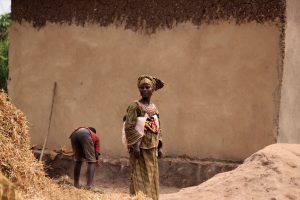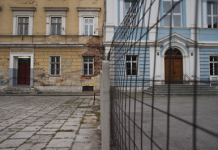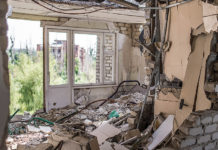
The death tolls from the mass slaughters in Bosnia-Herzegovina in 1992 and in Rwanda in 1994 convey the horror and extent of the genocides, but do not tell the whole story. In the shadow of these statistics are the ‘living dead’, the women from both conflicts who survived systematic sexual violence, including rape, sexual mutilation, forced pregnancy, forced abortion, sexual exploitation and forced marriage, all of which ‘constituted a central part of the aggressors’ genocidal mission’ (de Londras, 2009, p3). In both countries the rapes were organised, systematic, predominantly targeted one ethnic group and focused mainly on women, who symbolised the heart of their communities. The scale and nature of their suffering triggered an international response from women’s organisations, which pushed for the crime of rape to be hauled out of its customary pit of indifference and impunity and included in the mandates of the United Nations (UN) ad hoc tribunals, specifically created to punish the genocidaires of Bosnia and Rwanda. The tribunals, the International Criminal Tribunal for Rwanda (ICTR) and the International Criminal Tribunal for the former Yugoslavia (ICTY), set powerful legal precedents by finding respectively that rape could constitute genocide in Prosecutor vs. Akayesu, and by delivering a guilty verdict for rape as a crime against humanity in Prosecutor vs. Kunarac. While these tribunals made definite strides in the development of the crime of rape in international law, their attitude and actions consigned the mass rapes to historical record as a minor event during the genocides. For the countless rape survivors the powerful precedents are merely empty legal victories that neither reflect the scale and extent of the crime, nor translate into any form of justice. What happened to these woman more than 20 years ago in Rwanda and Bosnia remains an ongoing but neglected humanitarian tragedy.
Chapter one highlights the magnitude of the legal progress made by the tribunals by exploring the historical context of rape in warfare. The dominant lens through which the crime of rape has been viewed and judged has been male. Looking at rape through gendered lenses (Tickner and Sjoberg, 2007), from a feminist perspective, explains why rape was seen as one of war’s dirty little secrets, ‘conceptualised as a letting off of steam and not as a crime’ (de Londras, 2009, p2). It also exposes why the crime of rape has remained marginalised, its victims demeaned and its consequences negligible. A realist perspective explains the persistent presence and nature of rape on the battlefield through the centuries, while the rise of international women’s movements explains why the suffering of women in Bosnia and Rwanda merited court attention, despite the previous reign of impunity. Women’s organisations also helped define genocidal rape as opposed to war rape, and explore why rape is such an effective weapon to destroy a group. The chapter finally explores the tribunals’ ground-breaking decisions, and their establishment of an international definition of rape, but with the caveat that the act of defining a crime may ultimately prove to be a stumbling block in the judicial process.
Chapter two outlines the context of the mass rapes during the genocides in Bosnia and in Rwanda. While highlighting the particular strategies used in each country, the chapter illustrates how the goal of rape and the consequences of the crime were universally the same. The chapter then analyses the creation of the tribunals, ‘slammed as “fig leaves” for international apathy’ (Power, 2003, p491), before exploring the instrumental but limited role of women within ‘a judicial process that marginalizes, dehumanizes or demeans rape victims’ (Nowrojee, 2005).
Chapter three evaluates the failings of the ICTR when dealing with sexual violence, specifically exploring the Akayesu judgement to demonstrate that it was more incidental than ground-breaking, and is increasingly seen as a ‘stand alone decision’ (Nowrojee, 2005). It then analyses the deficiencies of the ICTY, particularly its failure to acknowledge the charge of rape as an act of genocide or of ethnic cleansing, a charging practice that highlights the problem with how crimes are defined. The debate over the use of the term genocide versus crimes against humanity necessarily involves analysing the problems inherent within the definition of genocide.
However, the tribunals’ real legacy comes from the voices of the survivors for whom snapshot courtroom victories do not reflect their fate. These women are unable to go back to their communities because of the stigma and shame associated with rape; they are dying of AIDS; are psychologically scarred; are mothers of children they do not love, all trapped in a living hell. There has never been compensation, and without legitimate recognition of the crime against them there will never be any justice. The tribunals’ legacy within the International Criminal Court (ICC) remains to be seen, but there appears to be some room for optimism as the ICC recognised rape as a main component of al-Bashir’s 2003 genocidal campaign in Darfur.
Before rape can be tried as the truly heinous crime that it is, however, attitudes need to change. The pervading perspective in the tribunals towards crimes of sexual violence was ‘the stereotypical image of rape in male judges’ heads’, that of ‘domestic crimes where a girl is walking down the street in a short skirt’ (Askin, 2009). In addition, gender-sensitive rules and procedures are only as effective as the people who are interpreting and enforcing them.
While acknowledging that men and children in both countries were also victims of rape, this dissertation will focus on the rape of women, who were overwhelmingly the target (Folnegovic-Smalc, 1994). It is also necessary to add that rape was committed on all sides of the conflicts, but in Bosnia the majority had been ‘committed by Serb forces against Muslim women from Bosnia-Herzegovina’ (UN Commission on Human Rights, 1993, para 84), while in Rwanda, ‘Tutsi women were specifically targeted because of their ethnicity’ (Organization of African Unity (OAU), 2000).
Read the whole document : The impact of legal precedents on the survivors of genocidal rape
Claire Macdonald
Derniers articles parClaire Macdonald (voir tous)
- The Impact of Legal Precedents on the Survivors of Genocidal Rape – 6 octobre 2014







